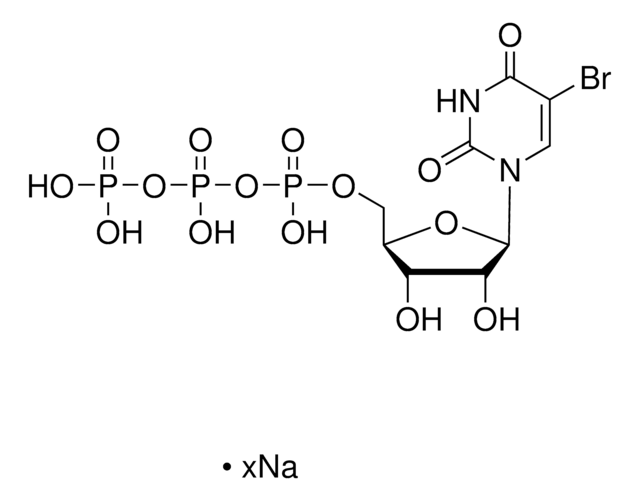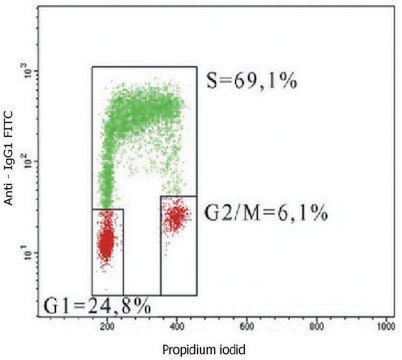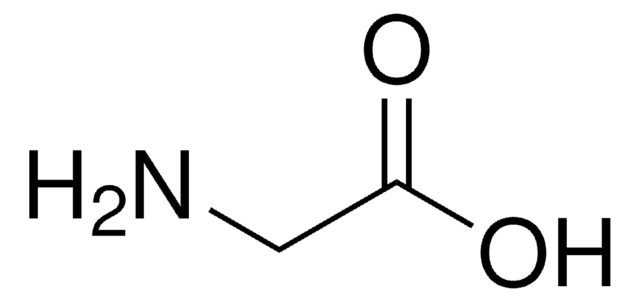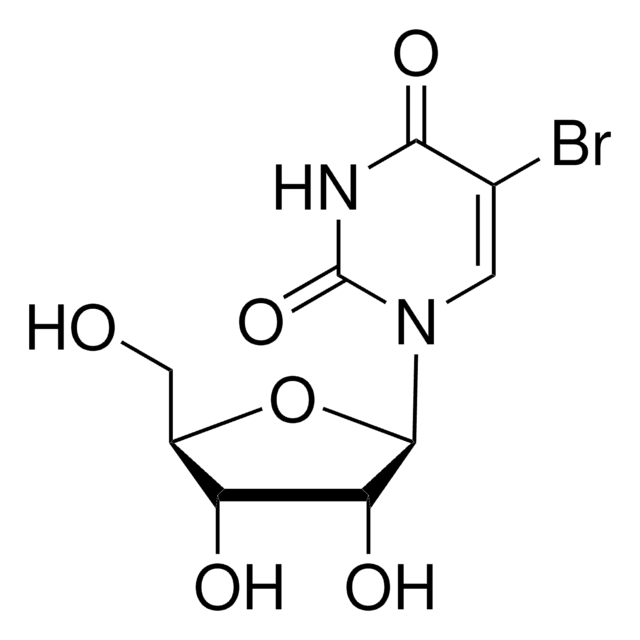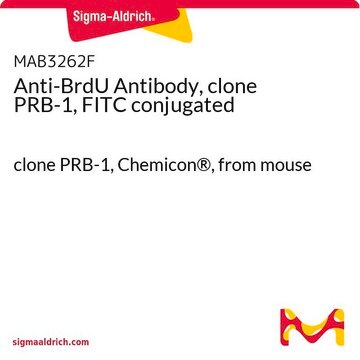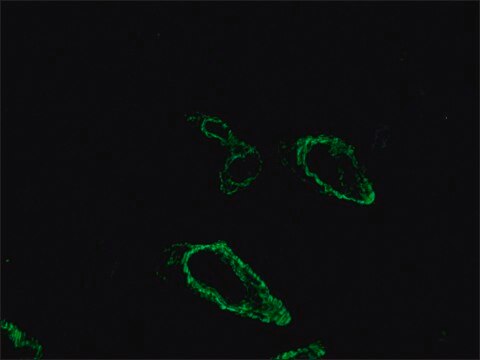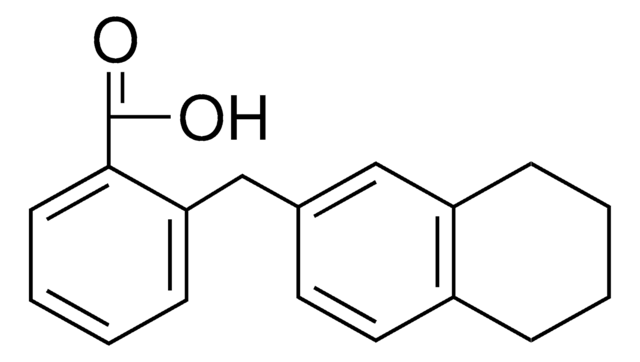B8434
Monoklonaler Anti-BrdU in Maus hergestellte Antikörper
clone BU-33, purified from hybridoma cell culture
Synonym(e):
Anti-Bromdesoxyuridin
About This Item
Empfohlene Produkte
Biologische Quelle
mouse
Qualitätsniveau
Konjugat
unconjugated
Antikörperform
purified from hybridoma cell culture
purified immunoglobulin
Antikörper-Produkttyp
primary antibodies
Klon
BU-33, monoclonal
Form
buffered aqueous solution
Speziesreaktivität
wide range
Verpackung
antibody small pack of 25 μL
Konzentration
~1.5 mg/mL
Methode(n)
immunocytochemistry: suitable
immunohistochemistry (formalin-fixed, paraffin-embedded sections): 1-2 μg/mL using sections of intestine from mice or rats treated in vivo with BrdU
Isotyp
IgG1
Versandbedingung
dry ice
Lagertemp.
−20°C
Posttranslationale Modifikation Target
unmodified
Suchen Sie nach ähnlichen Produkten? Aufrufen Leitfaden zum Produktvergleich
Allgemeine Beschreibung
Anti-BrdU antibody, Mouse monoclonal (mouse IgG1) is derived from the BU-33 hybridoma produced by the fusion of murine myeloma cells and splenocytes from BALB/c mouse immunized with bromodeoxyuridine (BrdU) conjugated to KLH.5′-Bromo-2-deoxyuridine (BrdU) staining is predominantly used to observe the multiplication of tumor cells and other tissues in vivo.
Spezifität
Immunogen
Anwendung
- BrdU labeling
- immunohistochemistry
- immunostaining
- BrdU assay
- to detect 5-fluorouridine-labelled RNA
- to detect 5-bromo-2′-deoxyuridine (BrdU) labelled immunoreactive cells
- against BrdU labelled rat retinal sections
Physikalische Form
Lagerung und Haltbarkeit
Haftungsausschluss
Not finding the right product?
Try our Produkt-Auswahlhilfe.
WGK
WGK 1
Flammpunkt (°F)
Not applicable
Flammpunkt (°C)
Not applicable
Analysenzertifikate (COA)
Suchen Sie nach Analysenzertifikate (COA), indem Sie die Lot-/Chargennummer des Produkts eingeben. Lot- und Chargennummern sind auf dem Produktetikett hinter den Wörtern ‘Lot’ oder ‘Batch’ (Lot oder Charge) zu finden.
Besitzen Sie dieses Produkt bereits?
In der Dokumentenbibliothek finden Sie die Dokumentation zu den Produkten, die Sie kürzlich erworben haben.
Kunden haben sich ebenfalls angesehen
Unser Team von Wissenschaftlern verfügt über Erfahrung in allen Forschungsbereichen einschließlich Life Science, Materialwissenschaften, chemischer Synthese, Chromatographie, Analytik und vielen mehr..
Setzen Sie sich mit dem technischen Dienst in Verbindung.



